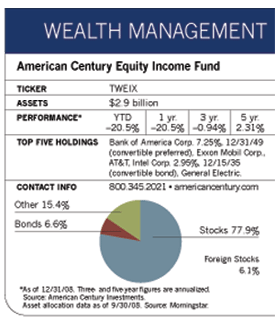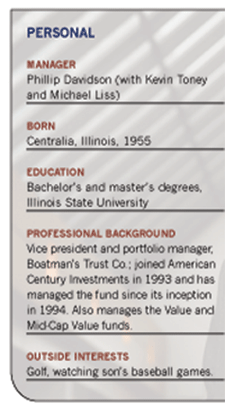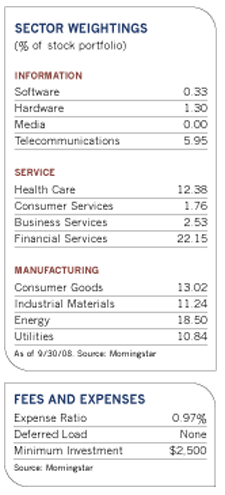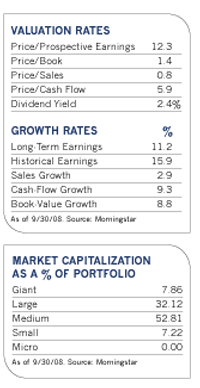Dividends have always been an important component of the fund's strategy. In its 15 years of operation, fewer than 1% of its approximately 100 holdings have cut dividends. In 2008, none of the companies in the fund did.
Avoiding dividend cuts in 2009 could prove more challenging than ever, though. By the end of November 2008, companies had slashed some $38 billion worth of dividends, according to Standard & Poor's analyst Howard Silverblatt, and many were paying out more in dividends than they recognized from earnings or cash flow. Before the credit crisis, financials contributed 34% of the dividend income, but they represented less than 20% by year's end. The number of companies increasing dividends had gone down from the same period in 2007, while the number slashing them had increased.
The fund managed to cushion the fallout from Bank of America's dividend cut earlier this year when Davidson sold the stock a few months before the cut and replaced it with the bank's convertible preferred security, whose payments are more secure. Although the convertible was also hit by the stock market debacle, Davidson says it held up much better than the common stock.
The upside of dividend cuts, he says, is that they present buying opportunities after they occur and the stock price drops. Although he has typically not used the strategy, he says he will be on the lookout for such opportunities this year among high-quality companies selling at favorable prices.
Davidson maintains a favorable outlook for fund holding Pfizer, despite a sharp decline in its share price in 2008. Investors have punished the stock largely because the company's most profitable drug, Lipitor, will be going off patent in two years and because other drugs in the pipeline were canceled. "There is an earnings hole, but not a balance sheet hole," he says. "Our stress tests indicate that Pfizer will still be able to make money even if it never produces another new drug." Although he says the company could cut its dividend two to three years down the road, its near-term outlook is solid and the 7% dividend yield on the stock provides an ample downside cushion.
He purchased shares in BP Plc, the world's third-largest integrated oil company, late last year after they had fallen sharply, reaching valuation measures he considered attractive. The stock had been underperforming the energy group for most of the year after the company endured an explosion at its refinery in Texas and an oil spill in Alaska, but Davidson considers the problems manageable.
In the financial sector, he continues to stick with more defensive names such as Marsh & McLennan Companies, an insurance and consulting firm that has had solid performance within its key insurance brokerage segment. Davidson thinks the company could pick up risk-wary customers from bailout recipient American International Group. In the banking area, he likes midsize banks with minimal subprime mortgage exposure such as Commerce Bancorp and People's United Financial. "The banking sector reached its lows in July and has actually done fairly well since then. But it still makes sense to stick with the stronger names because a lot of industry issues with capital strength and asset quality are not going to be resolved anytime soon," he says.












